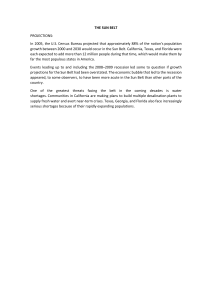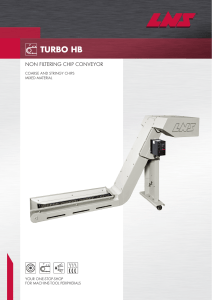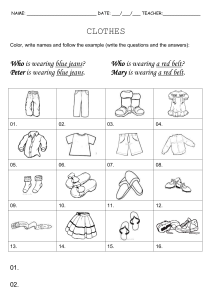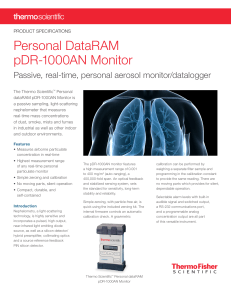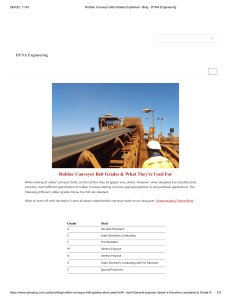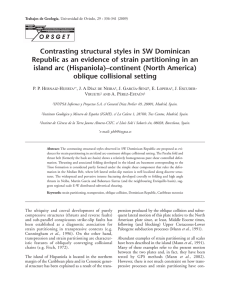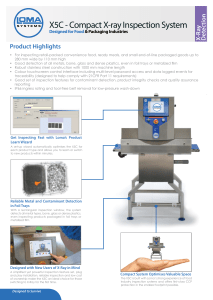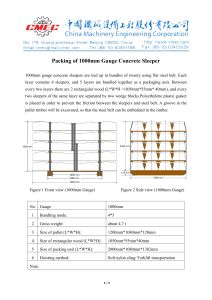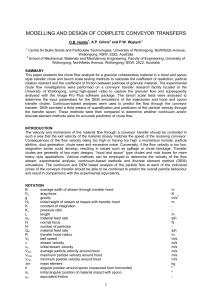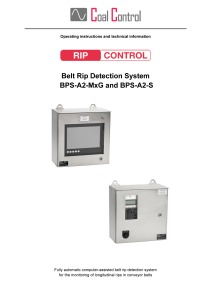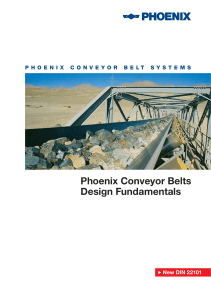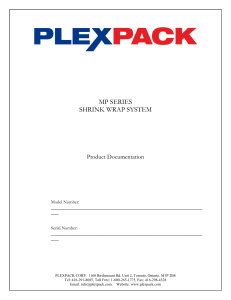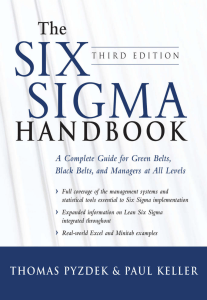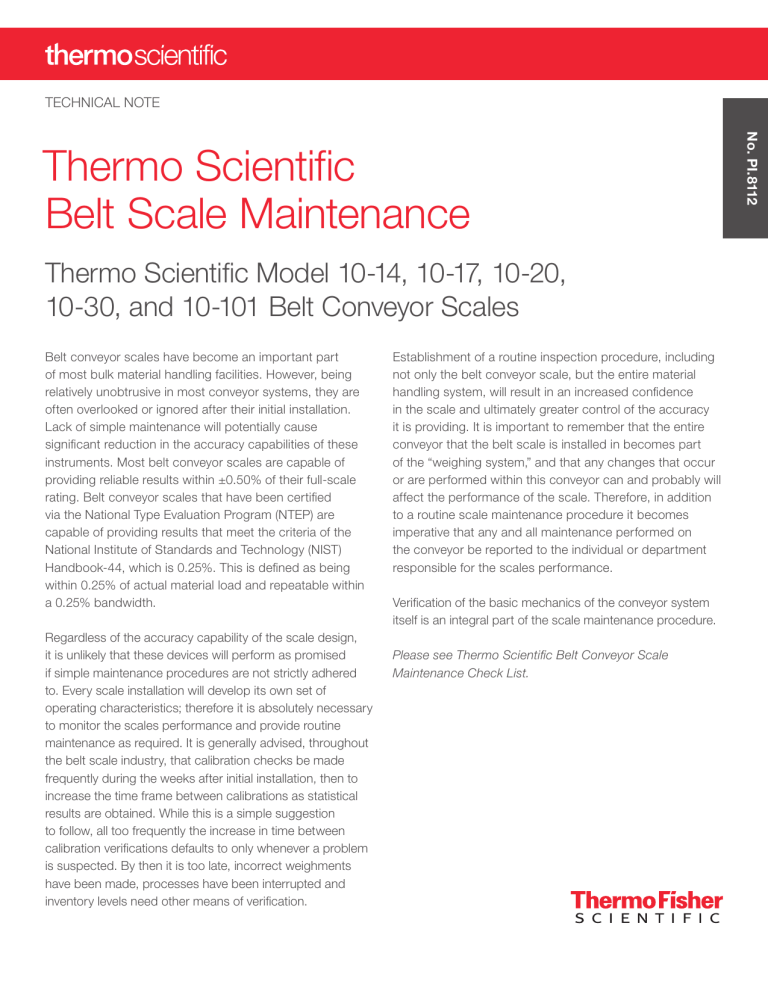
TECHNICAL NOTE Thermo Scientific Model 10-14, 10-17, 10-20, 10-30, and 10-101 Belt Conveyor Scales Belt conveyor scales have become an important part of most bulk material handling facilities. However, being relatively unobtrusive in most conveyor systems, they are often overlooked or ignored after their initial installation. Lack of simple maintenance will potentially cause significant reduction in the accuracy capabilities of these instruments. Most belt conveyor scales are capable of providing reliable results within ±0.50% of their full-scale rating. Belt conveyor scales that have been certified via the National Type Evaluation Program (NTEP) are capable of providing results that meet the criteria of the National Institute of Standards and Technology (NIST) Handbook-44, which is 0.25%. This is defined as being within 0.25% of actual material load and repeatable within a 0.25% bandwidth. Regardless of the accuracy capability of the scale design, it is unlikely that these devices will perform as promised if simple maintenance procedures are not strictly adhered to. Every scale installation will develop its own set of operating characteristics; therefore it is absolutely necessary to monitor the scales performance and provide routine maintenance as required. It is generally advised, throughout the belt scale industry, that calibration checks be made frequently during the weeks after initial installation, then to increase the time frame between calibrations as statistical results are obtained. While this is a simple suggestion to follow, all too frequently the increase in time between calibration verifications defaults to only whenever a problem is suspected. By then it is too late, incorrect weighments have been made, processes have been interrupted and inventory levels need other means of verification. Establishment of a routine inspection procedure, including not only the belt conveyor scale, but the entire material handling system, will result in an increased confidence in the scale and ultimately greater control of the accuracy it is providing. It is important to remember that the entire conveyor that the belt scale is installed in becomes part of the “weighing system,” and that any changes that occur or are performed within this conveyor can and probably will affect the performance of the scale. Therefore, in addition to a routine scale maintenance procedure it becomes imperative that any and all maintenance performed on the conveyor be reported to the individual or department responsible for the scales performance. Verification of the basic mechanics of the conveyor system itself is an integral part of the scale maintenance procedure. Please see Thermo Scientific Belt Conveyor Scale Maintenance Check List. No. PI.8112 Thermo Scientific Belt Scale Maintenance Thermo Scientific Belt Conveyor Scale Maintenance Check List Applicable to Thermo Scientific Model 10-14, 10-17, 10-20, 10-30, and 10-101 Belt Conveyor Scales Item Verification Interval Notes Scale Area - Debris Daily Clean scale area. Determine cause of debris and take steps to remedy Zero Cal Daily Perform Auto Zero procedure. Accept and record any changes. If change is >0.25%, identify cause and correct. Record results Idler Roll Condition Weekly Inspect idlers for wear / damage. Replace rolls or bearings as needed Span Cal Weekly Perform Auto SPAN simulated load tests. Check repeatability. Record results. Refer the HB-44 section UR.3.2 for actions if error exceeds 0.25% Belt Scraper Belt Condition Take-Up Speed Pulley Speed Sensor Coupling Load Cell Offset Load Cell Balance Static Weight Condition Revolution Time Zero Reference Number Audit Trail Line Voltage Alignment Excitation Belt Length Check Rods I/O Integrity Dead Band Auto Zero Track Limit Auto Zero Track Correction Passwords Wire Terminations Cable Integrity Spherical Washers Material Factors Weekly Weekly Monthly Monthly Monthly Quarterly Quarterly Quarterly Quarterly Quarterly Quarterly Quarterly Annually Annually Annually Annually Annually Annually Annually Annually Annually Annually Annually Annually Annually Check operation, adjust or replace blades if worn Visual inspection for cuts, tears or worn edges Inspect for free travel (bearings, sheaves, etc.) Inspect for wear, material build-up, belt wrap. Check bearings. Inspect for tightness, wobble and corrosion No load output must be within 1% of rated maximum (typical “S” cell is ±0.3 mV) Multiple load cell scales must be balanced to within 1 mV Check for corrosion, location and clearances Verify time for 1 belt rev at maximum speed Compare ZERO # with Reference #. Maximum change is 2%/year Review scale history Measure Hot to Neutral, Hot to Ground, Neutral to Ground. Correct as needed Complete per instruction manual Verify value and stability Measure and verify. Perform acquire test duration if changes noted Inspect check rods. Rods must be straight, spherical washers w/o corrosion Check and verify performance of all I/O being used Confirm settings and adjust if necessary Record data Record data Confirm and revise if required Inspect for corrosion and tightness Visual and ohm check (corrosion, moisture, deterioration) Inspect for corrosion, pitting, etc. Replace if necessary Verify with weighed load test After performing ANY tests or maintenance as part of weekly, monthly, quarterly, or annual schedule, ALWAYS repeat zero and span tests. Factory Assistance in the United States: Call toll-free: 1-800-445-3503 Email: [email protected] Find out more at thermofisher.com/bulkweighing © 2017 Thermo Fisher Scientific Inc. All rights reserved. All trademarks are the property of Thermo Fisher Scientific and its subsidiaries unless otherwise specified. PI.8112 0417
